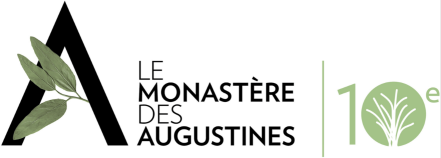Stress levels and adaptation

At some point in their life, everyone has had to experience stress on some level and face the challenges of adapting to it. We all have a loved one that we can’t help but worry about as they go through a stressful period. The terms adaptation and stress levels have gained new significance in this pandemic, which has created new challenges for everyone. The Modèle Intégratif-Intervention (integrated intervention model, or MII) developed by Doris Langlois examines the topics of adaptation and stress. Below are some of the findings of the model.
Adaptation

When a person encounters a new situation, they need to adapt to that situation. This means maintaining stability despite the stress produced by an unfamiliar situation. The actions and methods used to address new situations are called “coping mechanisms.” Mechanisms for coping with new situations are usually learned from family members or other people in the person’s immediate circle. However, coping mechanisms can also be developed by drawing on personal experience or the experience of someone who has lived through something similar. Observational learning (learning by observing and copying others) is one of the tools people can use to grow.
Adopting a variety of strategies and coping mechanisms gives us the best chance to adapt to the different stresses that are likely to arise in one’s life. In contrast, relying on few coping mechanisms or turning to the same ones over and over can perpetuate or even worsen existing stress. It’s no wonder that sharing experiences is key to the success of self-help groups that have stood the test of time.

The four levels of stress
What happens when one or more stressful events occur? How can someone contend with these challenges? Part of the solution to these questions lies in understanding the stress levels as defined by the MII.
- Level 1: The person has the time and support they require to feel a sense of stability despite the stressful events. The person’s priorities are in place and their needs are met, allowing them to live by their personal values. They feel their daily life has meaning and find happiness in helping others. The coping mechanisms are sufficient to address the situation and to allow the person to maintain stability. In other words, the person is prepared for the challenges they face.
- Level 2: The person is able to tolerate stress by varying their coping mechanisms. They are able to show kindness and affection to the people in their lives while dealing with the challenges facing them. They know when to express themselves and, as a result, have amicable communications with others.
- Level 3: The person lacks the support needed to address the challenges and they tend to rely too heavily on the same coping mechanisms. They suffer from anxiety and stress. They find less and less pleasure in things, lose their sense of humour and give more help to others than they receive. The people in their life worry about them. In such situations, it’s recommended that the person seek help from their family, friends or someone in their broader social circle. The goal is to prevent their symptoms from worsening, avoid exhaustion and discover new coping mechanisms.
- Level 4: The person is suffering a great deal. They are exhausted and tend to isolate themselves. They are overwhelmed by the challenges in their life. Their coping mechanisms are insufficient to alleviate their distress. Furthermore, their decision-making ability is becoming progressively more impaired. They don’t feel appreciated by others and in turn have a hard time appreciating the people around them. Other people’s needs disrupt their already precarious sense of stability. They may require medical care and professional support to regain some stability in their life.

In short, it’s important for every person to monitor their stress level and find appropriate strategies that will allow them to maintain or regain stability in their life. Recognizing and accepting personal vulnerabilities is a form of humility that is always beneficial. Every person deserves support that is commensurate with the challenges they face.
Michelle Lefebvre, social worker
Reference
LANGLOIS, Doris. Le modèle intégratif appliqué au monde de l’intervention: un univers à partager pour mieux aider… Accompanying document. Québec, ISBN 978-2-9810372-2-0. Legal deposit – Bibliothèque et Archives nationales du Québec, 2009. Legal deposit – Library and Archives Canada, 2009. 198 pages. Website: www.modeleintegratif.com

